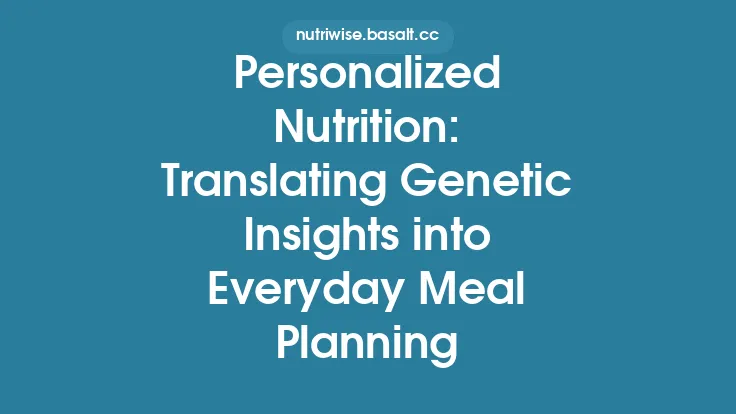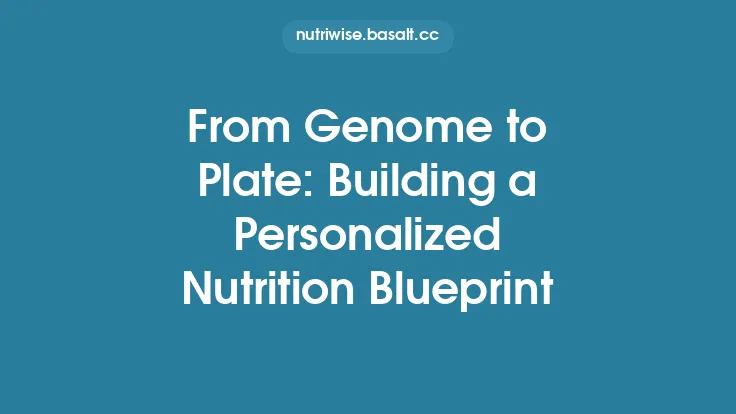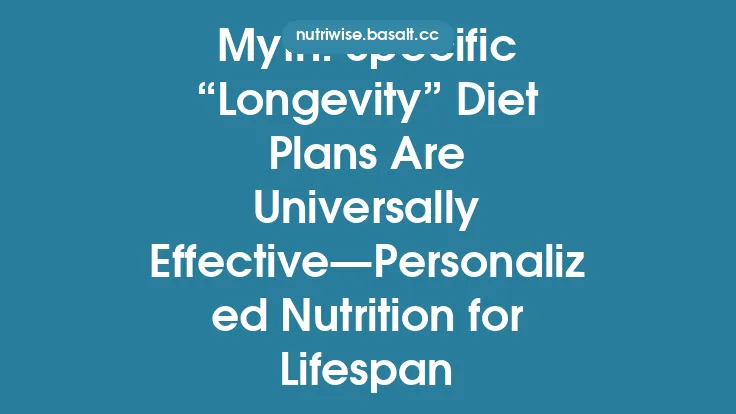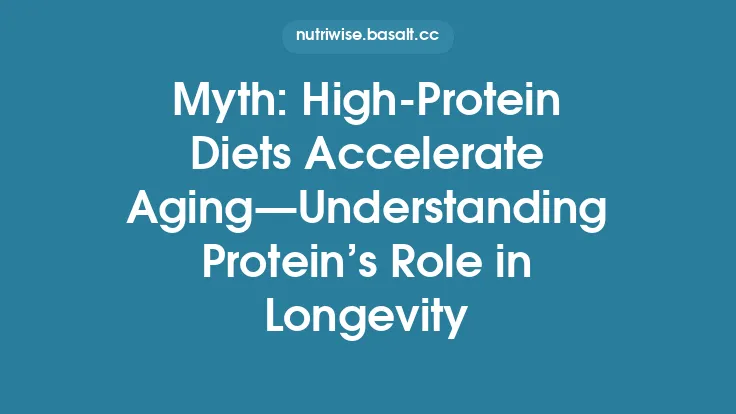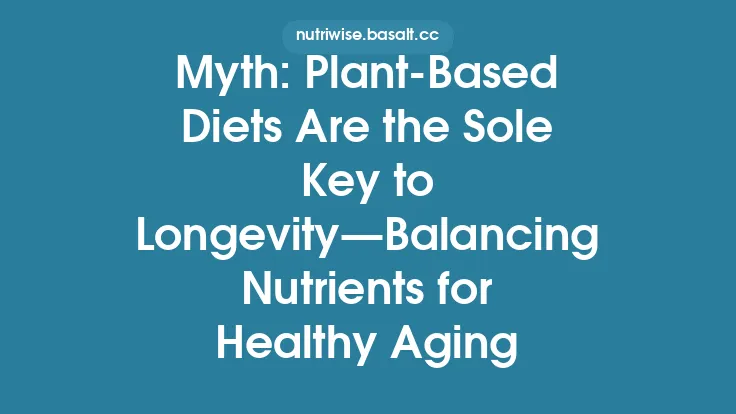The relationship between the food we eat and the genes that govern our metabolism is far from a new concept, yet the tools that allow us to explore this connection have advanced dramatically in the past decade. Modern nutrigenomics— the study of how genetic variation influences the way we process nutrients—offers a framework for moving beyond one‑size‑fits‑all dietary guidelines toward recommendations that reflect an individual’s biological makeup. This article unpacks the core principles, the most robust genetic markers, the technologies that detect them, and the practical considerations that accompany the translation of DNA data into dietary insight. By focusing on evergreen scientific knowledge, the discussion remains relevant even as new discoveries continue to emerge.
The Scientific Foundations of Nutrigenomics
Nutrigenomics rests on three interlocking pillars: (1) genetic variation, (2) biochemical pathways of nutrient metabolism, and (3) phenotypic outcomes such as blood lipid levels, insulin sensitivity, or inflammatory markers.
- Genetic Variation – The human genome contains roughly 3 billion base pairs, but only a fraction of this sequence differs between individuals. Single‑nucleotide polymorphisms (SNPs) are the most common form of variation and can alter the structure or expression of proteins involved in nutrient handling. Copy‑number variations (CNVs) and insertions/deletions (indels) also contribute, though they are less frequently interrogated in commercial nutrigenomic panels.
- Metabolic Pathways – Nutrients are processed through cascades of enzymatic reactions. For example, dietary fats are emulsified, hydrolyzed, absorbed, packaged into chylomicrons, and ultimately oxidized or stored. Each step is mediated by specific proteins whose activity can be modulated by genetic variants. When a variant reduces enzyme efficiency, the downstream flux of metabolites changes, potentially influencing disease risk or nutrient requirements.
- Phenotypic Outcomes – The ultimate goal of nutrigenomics is to link genotype to measurable traits. Large cohort studies (e.g., the Framingham Heart Study, UK Biobank) have identified reproducible associations between SNPs and biomarkers such as LDL‑cholesterol, triglycerides, or plasma fatty‑acid composition. These associations provide the evidence base for recommending dietary adjustments that align with an individual’s genetic predisposition.
The field distinguishes nutrigenetics (how genetic makeup influences response to nutrients) from nutrigenomics (how nutrients affect gene expression). This article concentrates on the former, which is the basis for personalized dietary guidance derived from DNA.
Key Genetic Variants Influencing Macronutrient Processing
While thousands of SNPs have been cataloged, a relatively small subset demonstrates consistent, clinically meaningful effects on macronutrient metabolism. Below are the most widely validated markers, grouped by the macronutrient class they affect.
1. Lipid Metabolism
| Gene | Variant (rsID) | Functional Impact | Typical Phenotypic Signal |
|---|---|---|---|
| APOE | rs429358 / rs7412 (ε2, ε3, ε4 alleles) | Alters apolipoprotein E isoform, influencing LDL receptor binding | ε4 carriers often exhibit higher LDL‑C and triglycerides; may benefit from reduced saturated fat intake |
| LPL | rs328 (S447X) | Truncates lipoprotein lipase, increasing its activity | Associated with lower triglycerides; carriers may tolerate higher dietary fat without hypertriglyceridemia |
| CETP | rs708272 (TaqIB) | Modulates cholesteryl‑ester transfer protein activity | B2 allele linked to higher HDL‑C; may influence response to dietary cholesterol |
2. Carbohydrate Utilization
| Gene | Variant (rsID) | Functional Impact | Typical Phenotypic Signal |
|---|---|---|---|
| AMY1 | Copy‑number variation (≥8 copies = high) | Increases salivary amylase production, enhancing starch digestion | High copy number correlates with improved post‑prandial glucose handling after starchy meals |
| GCKR | rs1260326 (P446L) | Reduces glucokinase regulatory protein inhibition, raising hepatic glucose uptake | Associated with modestly lower fasting glucose but higher triglycerides; may affect response to high‑carbohydrate diets |
| SLC2A2 | rs5400 | Alters GLUT2 transporter efficiency in liver and pancreas | Influences fasting glucose and insulin secretion dynamics |
3. Protein Metabolism
| Gene | Variant (rsID) | Functional Impact | Typical Phenotypic Signal |
|---|---|---|---|
| BCAT2 | rs1013700 | Affects branched‑chain amino‑acid transaminase activity | Variants linked to altered plasma BCAA levels, which can modulate insulin sensitivity |
| FTO (although often discussed in obesity, its effect on protein metabolism is notable) | rs9939609 | Influences appetite regulation and energy expenditure | A‑allele carriers may exhibit higher protein oxidation rates, affecting satiety and lean‑mass preservation |
These markers are repeatedly observed across diverse populations and have been incorporated into many nutrigenomic testing platforms. Importantly, each variant exerts a modest effect size; the cumulative impact of multiple SNPs, often expressed as a polygenic risk score, provides a more reliable predictor of metabolic response.
How Genetic Testing Platforms Assess Nutrigenomic Markers
Modern nutrigenomic panels typically follow a standardized workflow:
- Sample Collection – Saliva kits are the most common, offering a non‑invasive method that yields sufficient DNA for SNP genotyping. Blood draws are occasionally used for higher DNA yield or when additional biomarkers (e.g., metabolomics) are co‑measured.
- DNA Extraction & Quality Control – Automated extraction systems isolate genomic DNA, which is then quantified and assessed for purity (A260/A280 ratio). Samples failing quality thresholds are rejected to avoid genotyping errors.
- Genotyping Technology – Two primary approaches dominate:
- Microarray‑Based SNP Arrays – Platforms such as Illumina Global Screening Array interrogate hundreds of thousands of SNPs, including the nutrigenomic markers listed above. The array’s probe design ensures high call rates (>99%) for targeted variants.
- Targeted Next‑Generation Sequencing (NGS) – Some providers employ amplicon‑based NGS panels that sequence specific gene regions at high depth (≥200×). This method captures rare variants and CNVs (e.g., AMY1 copy number) that arrays may miss.
- Data Processing – Raw intensity data are converted into genotype calls using proprietary algorithms. Quality metrics (e.g., Hardy‑Weinberg equilibrium, call rate per SNP) are applied to flag problematic loci.
- Interpretation Layer – Bioinformatic pipelines map each genotype to an evidence‑based effect size derived from peer‑reviewed literature and meta‑analyses. The output may include:
- Allele‑Specific Recommendations (e.g., “Consider moderating saturated fat intake if you carry the APOE ε4 allele”)
- Polygenic Scores (e.g., a lipid‑metabolism score aggregating APOE, LPL, CETP variants)
- Confidence Indicators (e.g., “Strong evidence”, “Emerging evidence”)
- Report Generation – The final consumer‑facing report translates technical findings into plain language, often accompanied by visual aids (risk gauges, dietary tip boxes). Some services also provide a clinician portal for health‑care professionals to review raw genotype data.
Interpreting Nutrigenomic Reports: From Data to Dietary Insight
A nutrigenomic report is a starting point, not a definitive prescription. Effective interpretation hinges on three principles:
1. Contextualizing Genetic Influence
- Effect Size Matters – A single SNP may shift LDL‑C by 5–10 mg/dL, which is modest compared to lifestyle factors (e.g., a 20 % reduction in saturated fat can lower LDL‑C by 15–20 mg/dL). Recognizing the relative contribution prevents over‑reliance on genetic data.
- Gene‑Gene Interactions – Certain variants exhibit epistatic effects. For instance, the lipid‑lowering benefit of the LPL S447X variant is amplified when combined with an APOE ε2 allele. Polygenic scores attempt to capture these interactions, but they remain an approximation.
2. Integrating Phenotypic Measurements
- Baseline Biomarkers – Lipid panels, fasting glucose, and body composition data provide a reality check. If a person’s LDL‑C is already optimal, a recommendation to reduce saturated fat based on APOE ε4 may be less urgent.
- Lifestyle Audit – Dietary patterns, physical activity, sleep, and stress levels all modulate gene expression and metabolic outcomes. A holistic assessment ensures that genetic advice complements, rather than replaces, conventional counseling.
3. Translating Recommendations into Actionable Steps
- Specificity Over Generality – Instead of vague advice (“eat less fat”), nutrigenomic guidance should specify the type of fat (e.g., “limit saturated fat from processed meats; prioritize monounsaturated fats from olive oil”) and the context (e.g., “when consuming high‑fat meals, pair with fiber‑rich vegetables to attenuate post‑prandial lipemia”).
- Monitoring and Feedback – Follow‑up testing (e.g., repeat lipid panel after 3–6 months) helps gauge the impact of dietary adjustments and refines future recommendations.
Clinical and Practical Considerations for Practitioners
Health‑care professionals who incorporate nutrigenomic data into counseling must navigate several practical dimensions:
- Regulatory Landscape – In many jurisdictions, direct‑to‑consumer genetic tests are classified as wellness products rather than medical devices. Practitioners should verify that any test they endorse complies with local regulations and possesses appropriate analytical validation.
- Informed Consent – Clients must understand the scope of testing, potential outcomes, and data‑privacy implications. Consent forms should outline that results are probabilistic, not deterministic.
- Data Privacy & Security – Genetic information is highly sensitive. Providers should ensure that laboratories employ encryption, de‑identification, and comply with standards such as GDPR or HIPAA.
- Interdisciplinary Collaboration – Optimal use of nutrigenomic data often requires input from dietitians, genetic counselors, and physicians. A coordinated approach mitigates misinterpretation and aligns recommendations with overall health goals.
- Reimbursement & Cost – While many tests are paid out‑of‑pocket, some insurance plans may cover them when ordered for specific clinical indications (e.g., familial hypercholesterolemia). Practitioners should stay informed about evolving coverage policies.
Limitations, Controversies, and Ongoing Research
1. Population Diversity
Most nutrigenomic evidence derives from cohorts of European ancestry. Allele frequencies and effect sizes can differ markedly in other populations, leading to reduced predictive accuracy. Ongoing genome‑wide association studies (GWAS) in diverse groups aim to broaden the evidence base.
2. Pleiotropy and Context Dependence
A single variant may influence multiple metabolic pathways (pleiotropy). For example, the APOE ε4 allele affects lipid metabolism, neurocognitive risk, and inflammatory responses. Recommendations based on one pathway may inadvertently impact another, underscoring the need for balanced counseling.
3. Dynamic Nature of Evidence
Scientific consensus evolves. Variants once considered robust predictors may later be downgraded as new meta‑analyses emerge. Providers should adopt a “living report” mindset, revisiting recommendations as the literature updates.
4. Behavioral Impact
Research on whether genetic feedback leads to sustained dietary change yields mixed results. Some studies report modest improvements in adherence, while others find no significant behavioral shift. Tailoring communication strategies—emphasizing empowerment rather than determinism—appears crucial.
5. Technical Constraints
- Copy‑Number Variation Detection – Accurate quantification of genes like AMY1 remains challenging for array‑based platforms, potentially leading to misclassification.
- Rare Variant Interpretation – Sequencing can uncover rare mutations with unknown significance, creating uncertainty for both clinicians and consumers.
Future Directions Beyond the Current Landscape
While the present article focuses on established, evergreen knowledge, it is worth noting emerging avenues that will likely reshape nutrigenomics in the coming years:
- Multi‑Omics Integration – Combining genomics with transcriptomics, metabolomics, and microbiome profiling promises a more comprehensive view of nutrient–gene interactions.
- Machine‑Learning‑Driven Predictive Models – Advanced algorithms can synthesize large, heterogeneous datasets to generate individualized dietary simulations, moving beyond simple SNP‑based rules.
- Epigenetic Contextualization – Although not covered here, the interplay between diet‑induced epigenetic modifications and genetic predisposition is an active research frontier.
- Clinical Trials of Genotype‑Guided Diets – Large, randomized controlled trials are underway to test whether genotype‑tailored dietary interventions improve hard endpoints such as cardiovascular events or type‑2 diabetes incidence.
As these innovations mature, the core principles outlined—understanding genetic variation, mapping it onto metabolic pathways, and interpreting results within a broader health context—will remain the foundation upon which more sophisticated personalized nutrition strategies are built.

